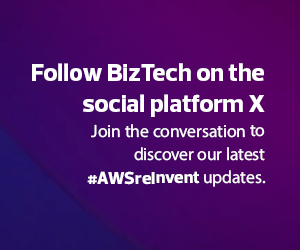The emergence of Software as a Service business intelligence solutions has made it easier for organizations to glean meaningful insights from their own data. To many organizations, BI solutions introduced “data democratization,” the idea of nonexpert end users building their own reports and dashboards without relying on professional analysts or data scientists.
But it’s not as easy as it sounds. In practice, most organizations continue to rely on a few employees who are adept at working with data sets, if not staff analysts, to conduct much of their regular reporting. However, the introduction of generative artificial intelligence into such tools, including QuickSight, a decade-old BI solution from Amazon Web Services (AWS), holds promise for finally empowering employees to become their own data analysts.
Such was the message of Jesse Gebhardt, senior manager and solution architect for Amazon QuickSight at AWS re:Invent, the Las Vegas event for developers, customers, analysts and others. AWS has taken to calling the merger of generative AI and business intelligence generative BI, Gebhardt said.
Generative BI allows someone building a report to more easily find the data points needed and to build dashboards and reports more proficiently. Users can make queries and give instructions in natural language to help build reports without writing a line of code. For those consuming data, generative AI can deliver executive summaries and answer questions about the reports.
“Now, with generative BI, we truly believe that the ability to gain insights out of data, to ask questions of it, to interrogate that data, is accessible to literally anybody who types a question in,” Gebhardt said.
Click the banner below to receive exclusive industry content when you register as an Insider.


How Availity Uses Generative BI in Amazon QuickSight
The AI capabilities within QuickSight are available to customers using Amazon Q, AWS’ broader AI solution. One company using Amazon Q, the healthcare transactions processor Availity, has leveraged Generative BI to empower more of its employees to self-serve reports and dashboards rather than relying on the company’s overworked analytics team, according to Michael Privat, Availity’s chief data officer.
“If you are on a data team, then you know that all the businesspeople are constantly making requests for this or that analysis,” he says. “It doesn’t scale, and you’d rather them self-serve.” Business leaders almost always prefer a self-service option as well, Privat said, because the alternative is waiting several days for analyst’s report: “It’s not that the analytics team is slow, they’re just overwhelmed with requests.”
At Availity, another challenge analysts confront is that the sheer volume of data the company produces makes it difficult to visualize the story the data is telling. “We facilitate billions of transactions,” Privat said. “It’s hard to see the narrative behind all these data points. What you wind up having to do is open a ticket for the data team, get a data analyst or even a data scientist to extract the story behind the data, and then you wait. This is why we have to enable self-service.”
Click the banner below to take your BI analytics one step further with these collaboration solutions.


Availity starts by giving its business users data-based “jumping-off points,” then allows them to use the AI tools in QuickSight to begin building their own reports and discovering their own narratives.
For example, a user might start with a basic dashboard created by the data team showing total healthcare transactions by month. A user who notices that one month has significantly higher transaction volume can use the tools to explore why. Users can ask questions, such as “What types of transactions can explain the difference in payer-to-provider transactions month to month?”
“It gives you a full report. So, this becomes your next jumping-off point, and off you go and you’re self-serving,” Privat said.
You can also ask the system to write a story about the unusual transaction volume, instructing it to provide its observations about the data, describe its views on the change and offer some next steps. It produced a short article within seconds. “Now, QuickSight isn’t a Pulitzer Prize winner,” Privat noted. “It’s pretty dry, it has no sense of humor, and it just writes what it sees and thinks. But there are some pretty smart nuggets in there. You just keep tinkering with it until you get what you want.”
To learn more about AWS re:Invent, visit our conference page. You can also follow us on the social platform X at @BizTechMagazine to see behind-the-scenes moments.
Photography by Bob Keaveney















